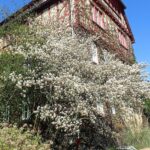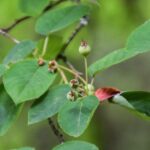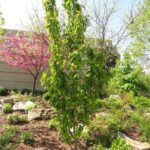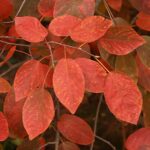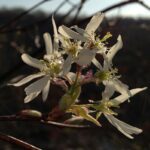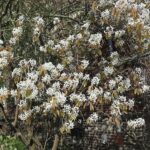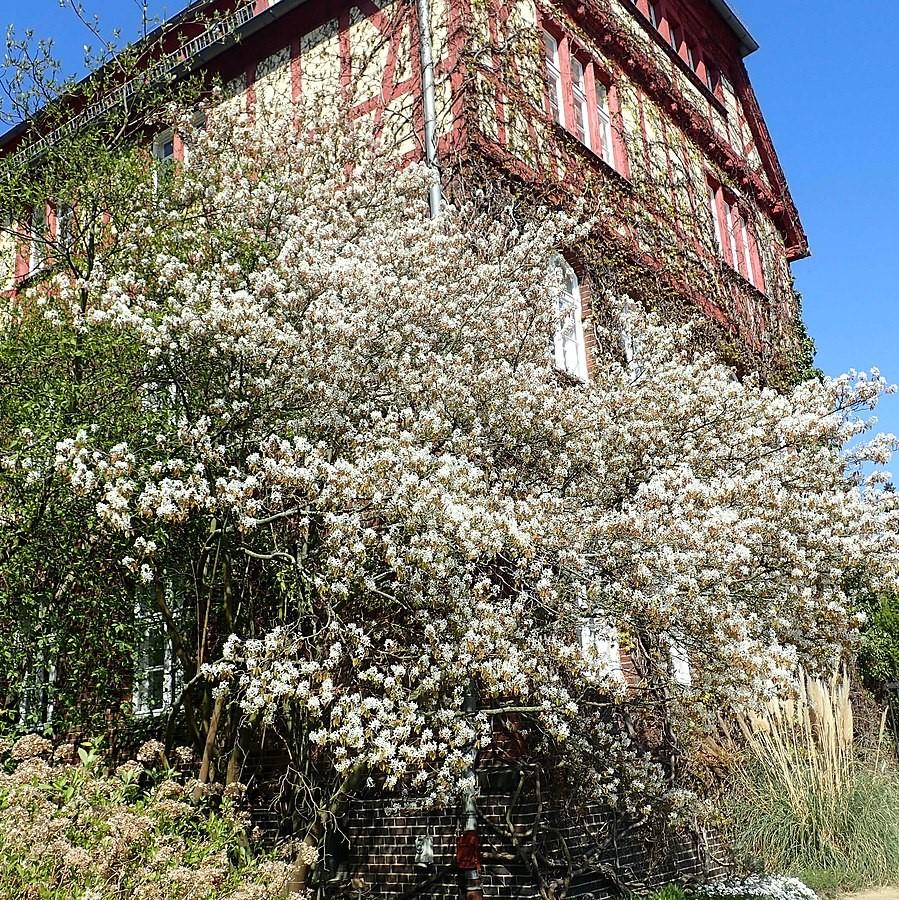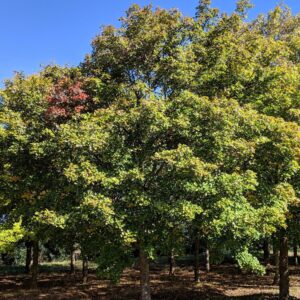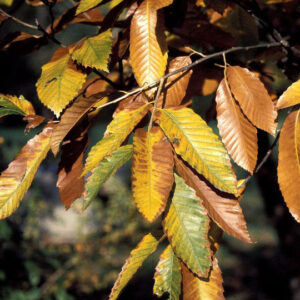The Downy Serviceberry typically grows to a height of 15 to 25 feet (4.5 to 7.5 meters) and has an upright, rounded shape. It has smooth, grayish-brown bark and oval-shaped leaves that are green in the summer and turn shades of yellow, orange, and red in the fall.
In the spring, the Downy Serviceberry produces clusters of white, star-shaped flowers that are highly attractive to pollinators such as bees and butterflies. These flowers are followed by small, round berries that start off green and ripen to a dark purple or black color. The berries are edible and have a sweet flavor, often used in jams, jellies, and pies.
The Downy Serviceberry is a versatile tree that can tolerate a variety of soil conditions and is often used in landscaping for its ornamental value. It can be planted as a specimen tree, in groupings, or as a hedge. It also provides food and habitat for birds and other wildlife.
|
Type: |
Tree |
|
Origins: |
Eastern N. America, GA Native |
|
Height: |
15′ – 25′ |
|
Spread: |
15′ – 25′ |
|
Spacing: |
20′ |
|
USDA Hardiness Zone: |
4 – 9 |
|
Culture: |
Full Sun, Part Sun |
|
Bloom Color: |
White |
|
Season of Interest: |
Spring, Fall |
MAINTENANCE NEEDS: Low maintenance. Rust, leaf spot, fire blight, powdery mildew, and canker are occasional disease problems. Sawfly, leaf miners, and borers are occasional pests.
LANDSCAPE USES: Group Plantings or Specimen Tree, Naturalized Areas, Wildlife Gardens, Woodland Gardens, and Shade Tree.
COMPANION PLANTS: Oakleaf Hydrangea, Dogwood, Joseph’s Coat
IMAGES: Salicyna, Amelanchier arborea 2019-04-16 0718, CC BY-SA 4.0, (2) Salicyna, Amelanchier arborea 2019-04-16 0719, CC BY-SA 4.0, (3) Fritzflohrreynolds, Amelanchier arborea – Downy Serviceberry, CC BY-SA 3.0, (4) Krzysztof Golik, Amelanchier arborea in Hackfalls Arboretum (2), CC BY-SA 4.0, (5) Krzysztof Golik, Amelanchier arborea in Hackfalls Arboretum (3), CC BY-SA 4.0, (6) Amos Oliver Doyle, Serviceberry or Shadbush, CC BY-SA 3.0
*As plants have ranges in appearance they may not appear as the images shown.

